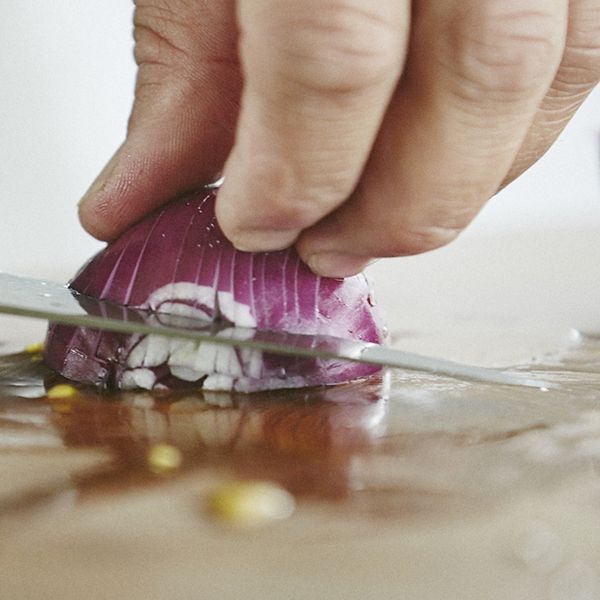The Ultimate Guide to Kitchen Knives | Bosch Home UK
The Ultimate Guide to Kitchen Knives
Kitchen knives. Where would we be without them? Well, nothing would get chopped or sliced for starters, and we’d all be eating much more significant portions. But kitchen knives do much more than that of course. In fact, they may just be the most essential utensil in your kitchen. From food preparation to serving, if you want to treat produce with respect and create the most delicious meals, then you need the correct knife for the job.
But where do you start when there are so many different types of kitchen knives out there? There are lots of shapes, sizes and materials, as well as chopping techniques, knife maintenance and more, to think about. The world of kitchen knives might seem like the domain of professional chefs. The names, terminology and sheer volume of options may even feel a little intimidating. But don’t worry, we’re here to sharpen up your skills and broaden your knowledge to whatever level works for you.
Whether you’re an experienced home cook, an enthusiastic beginner, or somewhere in between, it pays to have a working knowledge of the cutlery and utensils in your kitchen. Right now, you may not know a paring knife from a Santoku blade or a carving knife from a cleaver, but that’s where we come in. We’re about to tell you everything you need to know about kitchen knives, from how to choose the best blades on the market, to cleaning and caring tips, and how to use a chef’s knife. Welcome to our ultimate guide to kitchen knives.

Knives out? The importance of choosing the right blade
When it comes to ‘on trend’ kitchen utensils, knives are always in. Why? Because they’re essential and they can also be instruments of extraordinary quality that transform the way you cook.
But knives are just knives, we hear you say? Not true. Every kitchen knife is not made equally. From forged to stamped knives, stainless steel to ceramic, serrated to a straight edge, there is a massive range of designs, styles and materials to choose from. We all may think we know what a kitchen knife is. Still, there’s a world of difference between your standard dinner knife and the kind of razor-sharp Japanese blade that can slice open a can.
Without the right knowledge, you could spend money on knives you don’t need or end up with low quality when you do need something professional. As well as variations in style, material and quality, all knives are best at specific tasks, whether that’s chopping vegetables or filleting fish. The right blade for one job might not be suitable for others, so it’s essential to have a set that you can rely on for a range of different applications. They will help you prepare food safer, faster and cleaner than before, and significantly enhance the quality of your meals.
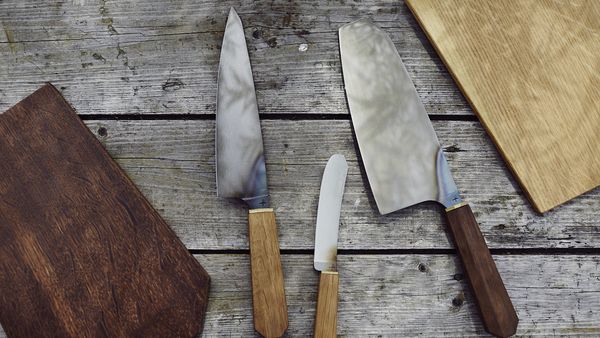
Understanding the different kitchen knife parts
Understanding the different kitchen knife parts
As well as the sometimes confusing names of different types of knivee, each one consists of individual parts, which also have specialist names. Some of these names are relatively familiar and self-explanatory like the tip, edge or handle. In contrast, others are a little harder to decode. Here’s a quick guide to some of the trickier names:
Tang
This is nothing to do with taste. It’s the part of the blade that fits in the handle, contributing to the weight, balance and durability of the knife. The tang can also effectively act as a handle in specific designs. Knives with ‘full-tang’, where the metal runs from end to end, are considered most balanced.
Heel
The heel is the bottom, lower edge of the blade itself. It is sometimes the widest point of the blade and comes into play when an extra force is needed during chopping or slicing.
Bolster
This is the part of the knife between the handle and the blade. It provides safe space between the fingers holding the knife and the cutting edge. As well as safety, its presence in the design also helps with balance and weight.
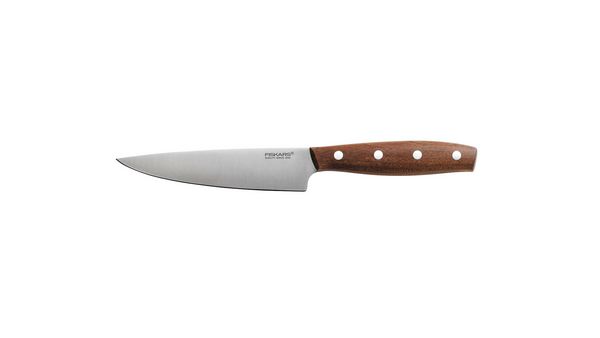
Geting to grips with essential kitchen knives
Before we explain the difference between a Santoku and a chef’s knife or how to use a mezzaluna, let’s start with the everyday essentials. After all, not all of us are whizzes in the kitchen who fillet fish and trim the meat from bones.
Suppose you’re only looking to furnish a new kitchen or refresh your utensil drawer. In that case, you’re more likely to ask what knives every kitchen should have as standard and what are the most commonly used kitchen knives? Well, you’ve come to the right place. Keep reading for our rundown of everyday kitchen knives and how to use them.
Paring knife
This small knife with a smooth, short blade is a kitchen essential. You’ll use it for chopping and deseeding chillies, coring and slicing fruit, chopping herbs, and trimming veg. It’s ideal for those jobs that require a sharp point and a smaller blade. Although it’s also called a vegetable knife, you can use a paring knife for jobs like deveining prawns too.
Utility knife
A versatile all-rounder, the utility knife is almost like a larger paring knife. Equally smooth and sharp, it can also do precision, but has the size to take on larger fruit and veg as needed.
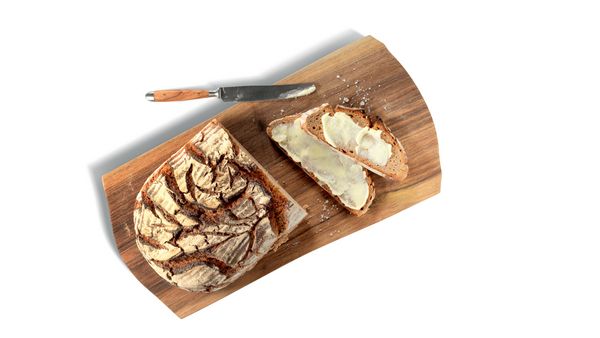
Bread knife
Most kitchens will have a bread knife with a long serrated blade. It’s the perfect tool for slicing through a crusty sourdough loaf or a stack of freshly made sandwiches. Bread knives often have a bit of weight to them so they can carve with ease. As well as bread, you’ll find them handy for sawing through larger fruits and veg, like pineapples. Every kitchen needs a bread knife.
Chef’s knife
The king of kitchen knives and a chef’s best friend. The chef’s knife is a large, broad, all-purpose knife that’s equally at home chopping and dicing as it is preparing meat and hard vegs like potatoes and onions.
You know all those fancy chef-style chopping techniques you see on TV? Well, this is the knife you use for those. The long, broad blade is rounded towards the tip and straight at its edge, making it perfect for rocking back and forth on the chopping board, known as rock chopping, as well as tap chopping.
Keep reading the rest of this guide for a few easy-to-follow chopping tips that will have you feeling like a pro in no time.
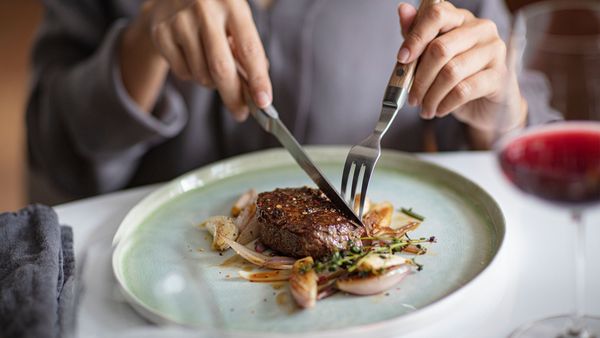
Carving knife
Alongside a two-pronged fork to hold meat in place, a long, sharp carving knife has been helping serve traditional roast dinners for decades. You won’t find one in every kitchen these days, but they remain the number one knife for carving thin, even slices of meat like a head chef. While a carving knife is perfect for beef, lamb, pork, and poultry, you’ll also find its long, thin blade handy for smoothly slicing a cake.
Steak knife
If you’ve ever eaten steak at a restaurant or pub, you’ll often find yourself given a steak knife in addition to your regular cutlery. A steak knife with a serrated edge cuts through a juicy fillet, rump or any other cut of meat, with ease.
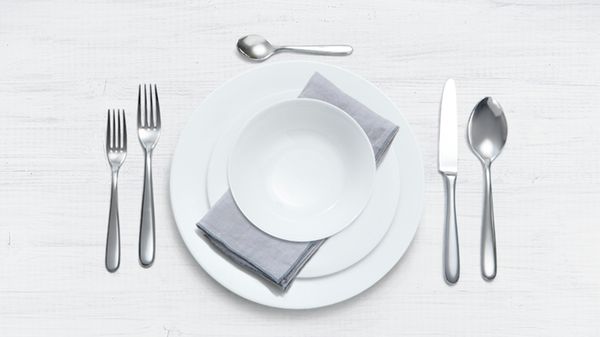
Cutlery knives
Alongside knives for preparing and serving food, there are also several variations of standard cutlery knives available. The most common is a simple dinner knife, of course. Used in almost every meal (and not just dinner), this knife is usually made from stainless steel. While designs vary, it often has a gently serrated edge for cutting through food.
We’ve already described a steak knife, and most of us are probably familiar with those, but what about a fish knife? Fish knives are wide and flat and were traditionally provided to help remove small bones and the skin of the fish.
Finally, we have the butter knife whose paddle-shaped blade is used for spreading.
You might already have several of the knives above in your kitchen, potentially without having known their proper names or real purpose until now. Thankfully, you don’t need to be a professional chef or experienced cook to develop a basic understanding of which kitchen knives to use and when. However, suppose you are looking to sharpen your cookery skills, there are more advanced and specialist kitchen knives to learn about too.
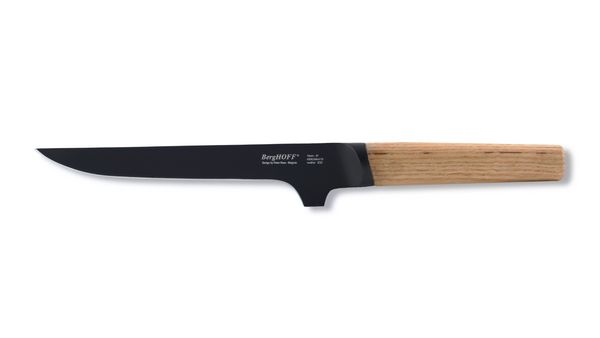
While our next selection of knives is a little fancier, you still don’t need to be honing your butchery or fine-dining skills to appreciate them. Although these kitchen knives may look more advanced, they’re useful and practical knives for every home cook, from beginners right through to budding professionals.
Filleting knife
A long, supple blade for filleting and skinning fish, this is the tool you’ll need if you’ve ever wanted to buy a whole fish and give filleting a try. It’s used in a sweeping action, but it’s also sharp enough to slice through flesh, remove the skin and cut away any bones. You can also get a knife specifically for salmon called (you guessed it) salmon knife.
Boning knife
Specially designed for deep cuts around bone, ligaments, and muscle, the narrow, sturdy, dagger-like boning knife is essential for butchery and deboning meat and fish.
A cleaver
While it doesn’t have a fancy name, the cleaver is another essential if you’re into butchery. It’s an old-school classic often used to cleave through meat and bone.
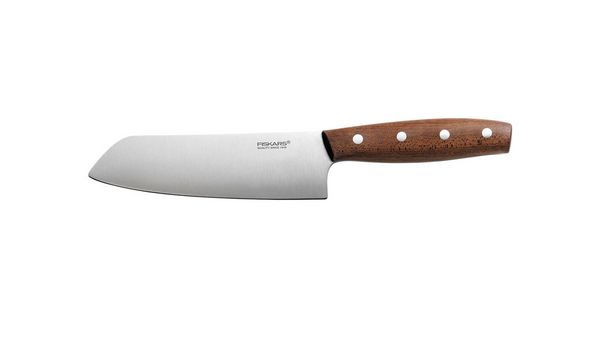
Crinkle cut knife
Reminiscent of a small cleaver, with a similar oblong-shaped blade, a crinkle cut knife has a more delicate purpose in life and is used to produce those little retro crinkles on fruit and veg.
Santoku knife
This is where we begin to get a little more specialised. Santoku knives are becoming increasingly popular with home cooks due to their precision and versatility. Santoku bocho means ‘three uses’ in Japanese, because they are great at slicing, dicing and chopping fish, meat, and vegetables. These knives have a flat edge and a sheepsfoot blade that curves down at an angle, with distinctive dimples in the metal which help release food and prevent it from sticking.
Nakiri knives
Our second Japanese knife on the list, Nakiri are vegetable knives with a rectangular, cleaver-like shape and a very sharp, straight edge. Other vegetable knives to look out for include a tomato knife (with a serrated edge to get through the flesh) and a peeling knife (an old school alternative to peeling tools).
Mezzaluna
No, a mezzaluna is not a salad, but you can use it to make one. A mezzaluna, which means ‘half-moon’ in Italian, is a curved blade with a double handle, which you use with both hands in a rocking motion. It’s very safe as your fingers are entirely out of the way and you can use it to pretty much chop anything. However, it’s most commonly used for salad, dicing vegetables or making pesto. You may also see mezzalunas with double or triple blades.
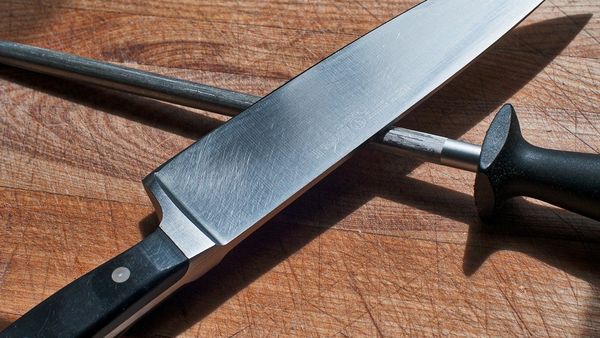
Looking after your kitchen knives
If you’re going to equip your kitchen with a new set of knives, it’s essential to know how to sharpen and care for them. A knife, like anything else, can get dirty or damaged and suffer from wear and tear over time. Still, with the right care, they can maintain their quality and durability for years.
How to sharpen kitchen knives
It may seem counter-intuitive, but a sharp knife is safer than a blunt one. Blunt knives make mistakes, they are more likely to catch or slip, and you’ll end up applying extra force to them, which can also increase the chances of an accident.
Honing steel or hand-held knife sharpeners, work by realigning the edge of the blade to make it sharper. A whetstone is more traditional (once upon a time used for swords) that actually shaves off a slither of metal with each use to refine the edge of the knife.
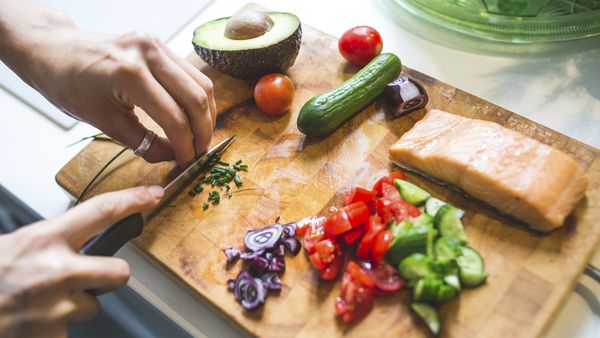
Store your knives safely
A knife block isn’t about having your expensive Japanese blades on display. It’s actually safer and more practical than keeping kitchen knives in a drawer, where there’s a danger of cutting yourself when you reach inside. A block also prevents blades colliding or hitting other cutlery and getting damaged.
Easy chopping techniques
Now you’ve got your knives sorted and you know how to care for them, it’s time to learn how to chop. Whether you want to know how to use a knife as a chef does, or just need advice on the best way to slice and dice meat, fish, vegetables, (and any other produce), we have tips to help you feel like a pro. There are three main ways to chop produce.
Rock chop
It’s all about that rocking motion. This technique is ideal for tomatoes and peppers as well as finely mincing herbs and aromatics. Position your fingers over the veg, keeping them safely out of the way. Then, use the flat of your hand on the spine of the knife to rock it back and forth from the tip to the heel.
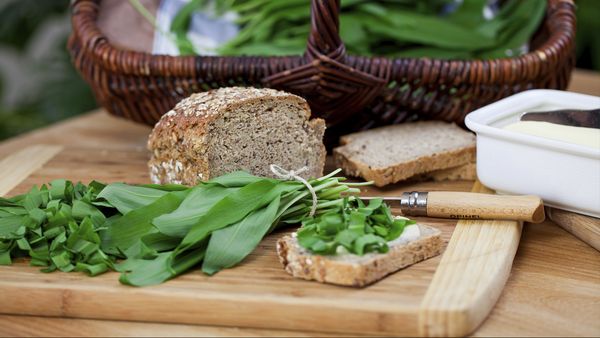
Tap chop
This technique is just for chopping produce that’s flat and stable. As with the rock chop, put your fingers over your ingredient, tucking fingertips with your thumb at the back. Chop down with the knife, moving your fingers back towards your thumb, guiding the blade and controlling its position, while keeping your fingertips safe.
Cross chop
Easy and simple, the cross chop is an excellent technique for fine chopping. Placing the tip of your knife on the chopping board, raise the blade to an angle of around 20 degrees. Then, raise and lower the handle of the knife repeatedly while keeping the tip of the knife on the board. Once done, use the blade to sweep your finely chopped ingredients to one side.
As well as chopping, there’s also slicing, back-slicing and other kinds of cuts, of course. How far you want to go in terms of knowledge and understanding really depends on what type of cook you want to be. If you’re keen to develop your skills to a chef’s standard, be sure to look out for cuts like the baton, batonnet, julienne, brunoise and more. Most of us at home probably chop paysanne, which means country-style, i.e. a little rough and ready.
Bonus tip: wooden chopping boards are considered more hygienic because their plastic cousins harbour bacteria from tiny pieces of leftover food in the cuts and grooves. Also, while chopping, consider putting a damp tea towel or cloth under your board if you ever have issues with it slipping.
What's your kitchen knife made of?
When it comes to buying kitchen knives, the options don’t end with knowing the best use of each type of knife. You’ve also got a choice of the best blade material and different kinds of edges. We’ll start with the materials. Each type of blade material, from steel, through ceramic to titanium, has its own pros and cons you’ll need to consider. The choice often comes down to what suits your kitchen and cooking needs. The main options are:
Stainless steel
The most widely used material for kitchen knives, stainless steel blades are strong and durable. They have an appealing shine thanks to their resistance to rust and corrosion. Stainless steel kitchen knives are the most affordable but need regular sharpening. You’ll generally pay a little extra for premium stainless steel, but it will last you a long time and retain its shiny finish if you look after it well.
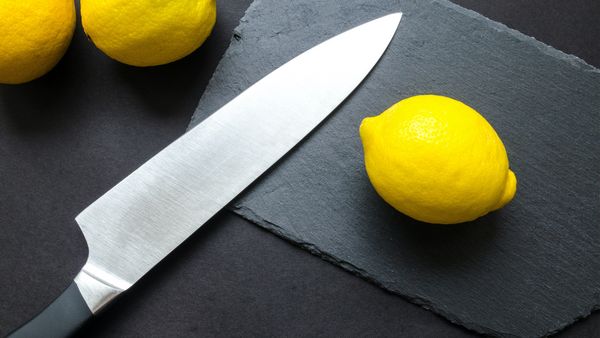
Carbon steel
An alloy of carbon and iron without chromium, this type of steel is robust and sharp. Carbon steel kitchen knives are among the sharpest available and offer exceptional durability. However, while it is easier to care for than stainless steel, it’s more susceptible to staining and discolouration. It won’t keep its shine like other knives.
Damascus steel
This may sound more like the kind of blade you’d get in an armoury and actually, you wouldn’t be wrong. That’s where Damascus steel comes from. Nowadays, we have less need for swords and much more of a use for fine kitchen knives of course. Still, Damascus steel remains in high demand thanks to its exceptional quality.
Blades made using Damascus steel have an unmistakable mottled pattern, which gives it a stunning appearance. This comes from the fact that it uses two or more alloys, often both hard and soft, forged together to create a blade that’s sharp, strong, and durable. No wonder the process has been used to make swords, knives and other weapons for hundreds of years.
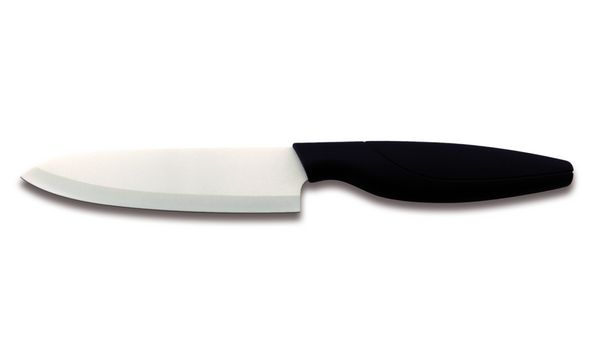
Titanium
While titanium is an incredibly hard metal, it’s less commonly used in kitchen knives as it’s harder to keep sharp. Titanium blades do have distinct grey colouration, however, that makes them popular as collectors’ items or utensils in a high-end kitchen display. Titanium is also non-magnetic and extremely resistant to rust and corrosion.
Ceramic kitchen knives
The only non-metallic knife on our list, ceramic blades are made using hardened zirconium dioxide. Ceramic kitchen knives are super lightweight and can be up to ten times harder than carbon steel, making them a popular choice among professional chefs. They also lend themselves to being on display, as the surface of the blades can have patterns or colours. However, ceramic kitchen knives do have a downside as they are more fragile than steel knives and susceptible to chipping.
Give your kitchen the edge
Many experts say the edge is the most crucial part of the knife and they might be right. It makes the blade sharp and cuts through the food. When it comes to the edge, it’s not about choosing a single type that works best, but having a range across your set of kitchen knives. Each is suited to a different kind of cutting and you’ll often need more than one.
Straight edge
You’ll find a straight edge on many knives in your kitchen, including utility, paring and chef’s knives, as it’s the most regularly seen type. It is also known as a flat ground edge.

Serrated
A serrated edge made up of small ridges and sharpened grooves for sawing can be used to cut through denser produce. Interestingly, serrated blades are also useful for slicing through soft foods that may get crushed out of shape with too much force. This is why a tomato knife has a serrated edge. You’ll also commonly find a serrated edge on a bread knife and a steak knife – two everyday favourites.
Scalloped
Also known as Granton edge knives due to the original manufacturer, scalloped edge knives include salmon knives and the Japanese Santoku. As we mentioned in our profile of the Santoku, the scalloped edge or dimples are perfect for releasing sticky food or thin strips that might otherwise cling to the blade.
Hollow ground
This style is also seen in Japanese kitchen knives. The term describes a blade that gets narrower as it gets closer to the edge, making it exceptionally sharp. Nakiri knives feature a hollow ground edge. The only drawback of this design is that the blade can be more fragile and needs more regular sharpening to keep its edge.
Kitchen knife tips
We’ve gone into detail on several key topics relating to kitchen knives in the sections above. Still, there’s always room for some more general tips, golden rules and facts.
Kitchen knives history lesson
Knives have been around for millions of years. The very first examples were forged from rocks and bones (thankfully we’ve moved on since then!) before advances in metallurgy and manufacturing helped elevate knives to exquisite standards of craftsmanship.
Today, kitchen knives are a staple of every household. They remain as essential to us as they were to our prehistoric ancestors. More than that, they can be used to get the very best out of your products and create the finest meals.
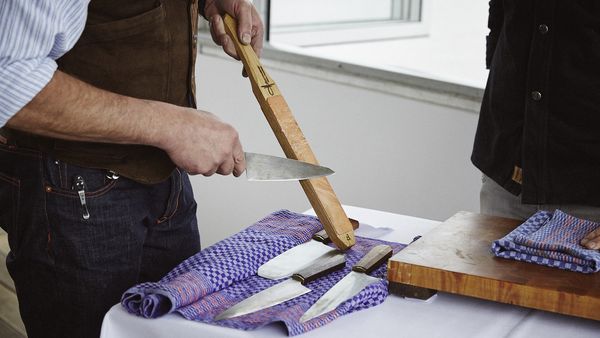
Forged knives vs stamped knives
The former is forged from a single piece of metal, which is heated and beaten, then sharpened. At the same time, the latter is cut from a sheet of steel using a stamping machine, with the handle added later. Forged knives are more robust, durable and have a better balance in the hand since the blade and tang are one. They are generally the preferred choice of professional chefs, but they are more expensive as a result.
Stamped knives are lighter and more affordable, in part due to the quicker manufacturing process. While they have a slightly lesser reputation, recent innovations in stamped knives by particular manufacturers have helped close the quality gap. Despite this, the answer to the question ‘what knives do professional chefs use?’ remains forged knives more often than not.
How to clean kitchen knives
It’s generally recommended to hand wash knives with hot water and soap, ensuring they are always dry when not in use. However, most blades are suitable for dishwashers. If you use the latter, it is said you should also sharpen your knives after every cycle, since cleaning agents can dull the blade. Professional kitchens sometimes wash their utensils at 90°C without washing-up powder to avoid wear and tear.
How to dispose of kitchen knives
When it’s time to replace your old knives, the safest way to dispose of them is to package them up, maybe in a cardboard box, to prevent injuries. You can also take them to your nearest waste disposal site for scrap metal or contact your local police station.

How to sharpen kitchen knives?
Did you know that your local butcher might offer a knife sharpening service? It’s worth asking, as most experts recommend taking your knives for a professional sharpening every once in a while. Especially if you’re an enthusiastic home cook and your blades are in regular use.
What are the best kitchen knives?
While the ultimate decision comes down to you and your kitchen’s needs (see our buying advice below), people also ask what the best knives on the market are? This sometimes comes down to east vs west. Japanese knives have a reputation for being the finest quality, with thinner, lighter, yet more delicate blades. In contrast, western knives (German knives are among the most highly regarded in the west) are known for their strength and durability.
Kitchen knife buying advice
When it comes to choosing knives, the most important deciding factor is your kitchen needs.
Every kitchen deserves a good set of knives. The more passionate you are about cooking, the more exciting it is to learn about different kitchen knives, how to use them, and which ones are worth spending a little extra on. Of course, not every kitchen will need the full range of knives we’ve listed above. The golden rule is to choose the type and quality of kitchen knife for your cooking and food preparation needs.
You know that old saying about a worker only being as good as their tools? Well, the same can be said for a chef and their knives. While a good cook is a good cook, you can absolutely elevate your preparation, cookery skills, and the quality of the dishes you produce with the right kitchen knives. Now that your knowledge of kitchen knives is as sharp and refined as Damascus steel, what are you waiting for? Buy the blades that are right for you and enjoy years of great food.

